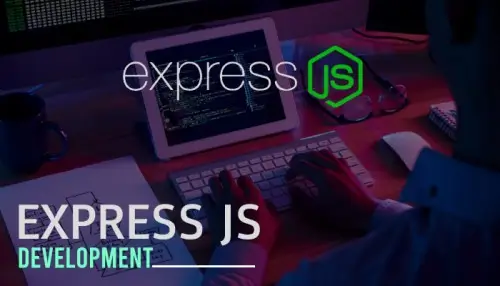WebRTC is an open source real time communication platform the enables its users to communicate among themselves through audio-visual platform. WebRTC also allows you to have video conferencing, screen sharing, and sharing large files instantly. WebRTC is supported by all the most popular browsers such as Chrome, Mozilla Firefox, Safari, etc. Do you know the functionality of WebRTC in Chrome? Do you know how to enable or disable WebRTC for Chrome? The following post will help you with all your queries.
WebRTC is such a platform which is supported by Google Chrome, Mozilla Firefox and Safari etc. But its functionality will vary from browsers to browsers. That means the performance of WebRTC on Chrome will not be same as that of with Mozilla Firefox. It may vary slightly. There are separate set of APIs for separate functionality of WebRTC like video conference, screen sharing, audio calling etc.
WebRTC for Chrome enables its users is to access data sharing, video calling, audio calling like all other features of WebRTC in the Chrome browser. Since Google Chrome is one of the fastest browsers, it will definitely complement the seamless functionality of WebRTC. Apart from these, Chrome is the most secure browser in the entire world. That is why it will undoubtedly add value to the security protocol of WebRTC. Chrome has features like Site isolation, predictive phishing and sandboxing that will guarantee you for security threats.
WebRTC in Chrome
WebRTC in chrome came into the picture in 2011, when Google put all of its efforts, technical know-how, productivity together. As a result, WebRTC on Chrome became the first true in-browser platform to Real-Time-Communications (RTC). Previously it was a dream for every web developer to develop peer-to-peer communication via an internet browser. But then WebRTC came into picture which enabled such a feature that will save enough time as well as money.
The creator of VP8 video codec and Global IP solutions was acquired by Google since they were already licensing low-level components of RTC. With the help of these advanced assets, the WebRTC Chrome project was invented at Google. It was made as an open-source platform and its developers settled on the codecs such as G.711, OPUS, and VP8, which are the required codecs for WebRTC APIs. In 2011, the WeBRTC was finally assembled by Ericsson. Around November 2012, Chrome 23 had already become the elemental large scale browser to provide submerged WebRTC functionality straight out of the box.
Functionality of WebRTC
It is quite similar to that of the functionality of Firefox. It consists of three sets of APIs such as
1. getUserMedia
2. RTCPeerConnection
3. RTCDataChannel
Let’s discuss how these APIs perform in WebRTC for the communication process and how the files, messages, or calls are delivered from one peer to another.
1. Firstly, the media is apprehended by and synchronized by getUserMedia.
2. Right after that, the media is transmitted in an answer model through a signaling mechanism via RTCPeerConnection.
3. Erratic data such as text chat, file sharing, etc. are authorized with RTCDataChannel.
4. When taken collectively these set of APIs has the potential of circulating any credible form of real-time data.
In a broader view, except for Chrome browsers, the most pivotal component for the developers of WebRTC Chrome is the server-side signaling implementation. This will enable trouble-free peer-to-peer communication. This solution is not included in Chrome browsers rather it comes in the form of a pre-existing signaling platform.
NAT Traversal
NAT or Network Address Translation is a method that is being used to assign IP addresses into another space by slightly modifying the network address information. This is usually done when the packets are in a transition mode across a traffic routing device. This technique is adopted in the form of protection where unprompted traffic is not allowed to the user’s device. Especially for a platform like WebRTC Chrome who uses different types of mediums for signaling and transferring data, it’s quite impossible to identify such traffics.
The NAT traversal problems are identified when the peers behind different NATs try to communicate among themselves. It can be stopped using the different NAT traversal techniques like TCP hole punching.
What Makes WebRTC for Chrome different?
Since Chrome and Firefox utilise the three equal sets of APIs, so the concept WebRTC is quite similar in both the cases. But the proficiency of WebRTC on Chrome is quite different from that of Firefox. If we are talking about the codecs such as Opus, G.711, and VP8, then yes both the browsers are natively supported by these codecs. But the codecs such as iLBC, iSAC, and G.722 are only natively supported by Google Chrome. The web developers using WebRTC APIs will be facilitated to a spacious array of voice codecs. It may be helpful for those developers who are consolidating the WebRTC platform to VoIP networks.
The compatibility issue between chrome and Firefox browsers is solved because of a signalling mechanism. It means if an iLBC codec is offered to the Firefox browser, then the signaling mechanism will push the Chrome browser to acquire either an Opus or a G.711 codec for ensuring the interoperability. There are certain methods that are used to estimate the getUserMedia parameters of each user and right after that, a shared codec is executed to develop the connection.
Add WebRTC to Chrome: A Step Towards Digitally Developed Future!
Since WebRTC is supported by Chrome we can’t simply assume that all the 55% of the internet users are WebRTC entitled. Till now WebRTC is only supported by all the newest versions of Chrome. It is yet to be available on all other versions. Considering the broader picture you can say that WebRTC has become the most preferred RTC platform by most of the commercial browsers because of its functionality. As of now nearly 1Billion devices are presently WebRTC enabled, out of which a majority number of devices use the Chrome browser.
CONCLUSION
WebRTC is the highest level secure as well as a reliable platform that enables its users to communicate among themselves through video conferencing, audio calling, and instant messaging, etc. WebRTC is supported by various browsers such as Firefox, Chrome, Opera, and Safari, etc. But not all the platform has the same functionality. Since the compatibility issue among Firefox and WebRTC for Chrome is solved, it has become quite easy for the users to get connected to WebRTC Chrome.
Oditek solutions have a well-maintained signaling platform that is focused to traverse the complications of NAT and fire-wall based hindrances that stop the clear communication between browsers. In Oditek Solutions the compatibility issues between – add WebRTC to Chrome and Firefox is solved quickly during the very beginning phase of the call.







